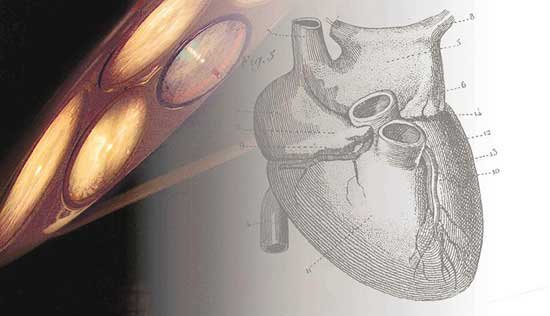
Jacob Wiles, 7, was able to live thanks to an organ donor. Two Lee County hospitals are good enough at securing organs for donation to have earned national recognition.
Today, Jacob is a rambunctious 7-year-old who shows no signs of ever having been sick.
"He's done great," Diane Wiles said.
Jacob was one of the lucky ones. Approximately 97,000 people in the United States are waiting for a new organ. An average of 17 a day will die without ever having received the lifesaving operation.
And that's where hospital doctors and nurses can make all the difference.
Earlier this month, two Lee County hospitals were recognized in a pack of national leaders in identifying organ donors. Southwest Florida Regional Medical Center and Cape Coral Hospital achieved the national goal for organ donations: 75 percent or more eligible donors gave their organs after their death. Consent for such a gift can come from family members or the patients themselves if they are registered donors and have made their wishes known.
The accomplishment culminates a delicate balance of talking to grieving family members, notifying LifeLink, the region's organ recovery program, and then beginning the complicated work of keeping a patient's body functioning until specialized teams of surgeons can remove organs and tissues and rush them to other people who need them. The patients are brain dead, but hooked to machines that keep their organs functioning until the surgeons are ready to recover them.
"The enthusiasm they have toward saving other people's lives is commendable," Elaine Maki, a registered nurse and the local coordinator for LifeLink, said of area doctors and hospital staff. "We are doing awesome down here."
Cape Coral and Southwest Regional may have achieved national distinction, but they aren't the only local hospitals doing well. Maki said Lee Memorial Hospital has seen 17 donors in the past year whose gifts have helped some 60 people. The national distinction goes off of a percentage, however, not actual numbers, meaning Lee Memorial didn't get the award even though 18 donors is considered to be a very good figure, Maki said.
All told, Lee Memorial's five hospitals have yielded 30 donors so far this year.
One donor can save eight lives, LifeLink spokeswoman Jennifer Krouse said. If the donor also gives tissues, corneas and other organs, the number of recipients can grow to 60, according to Maki.
"It's no accident this happened," said Cindy Boily, the chief patient care officer at Southwest Florida Regional Medical Center. "There's a lot of work that goes into it."
She said hospital staffers are well aware of the need for organ donations. Southwest, in fact, is a well-known kidney transplant center.
Dr. Lawrence Antonucci, the chief administrative officer of Cape Coral Hospital learned recently that his hospital had achieved the 75 percent mark.
"You can imagine what a difficult time this is for families, and for them to be able to come in and talk to the families and see the success, it just really benefits everybody," Antonucci said. "It was really exciting news."
The federal government began the push for organ donors in 2003. At that time, there were 83,000 waiting for lifesaving transplants, and fewer than half of the eligible donors had registered as organ donors or had family members who agreed to the procedure.
In 2006, there were about 8,000 donors nationally — an increase of about 1,400 since 2003, according to the U.S. Department of Health and Human Services.
Knowing the benefits of organ donation brings solace to Sherry Plisch of North Fort Myers.
On Dec. 12, 1994, her son Jesse shot himself. He was 15 and had endured the bullying of classmates who teased him about his minor disabilities.
"In our situation, it was like the gift of hope had just been given to us," said Plisch. "It was a way of him living on."
Jesse's liver was split between a graduate student and a 2-year-old boy; his heart and lungs went to a young man; one kidney went to a father of young children; the other kidney and pancreas went to a man named Sam who wanted to meet Plisch and her husband. He had been corresponding with the family, wanting to know about the teenager who had saved his life.
He pulled up in a big red pickup. The man told the Plisches that he didn't know what drew him to the truck on the lot, but after buying it, he re-read some letters Plisch had sent and realized the Plisches had told him about Jesse's dream of owning a red pickup.
The license plate read "Jesse's Dream."
"It's the ultimate act of love and sharing," Plisch said

No comments:
Post a Comment